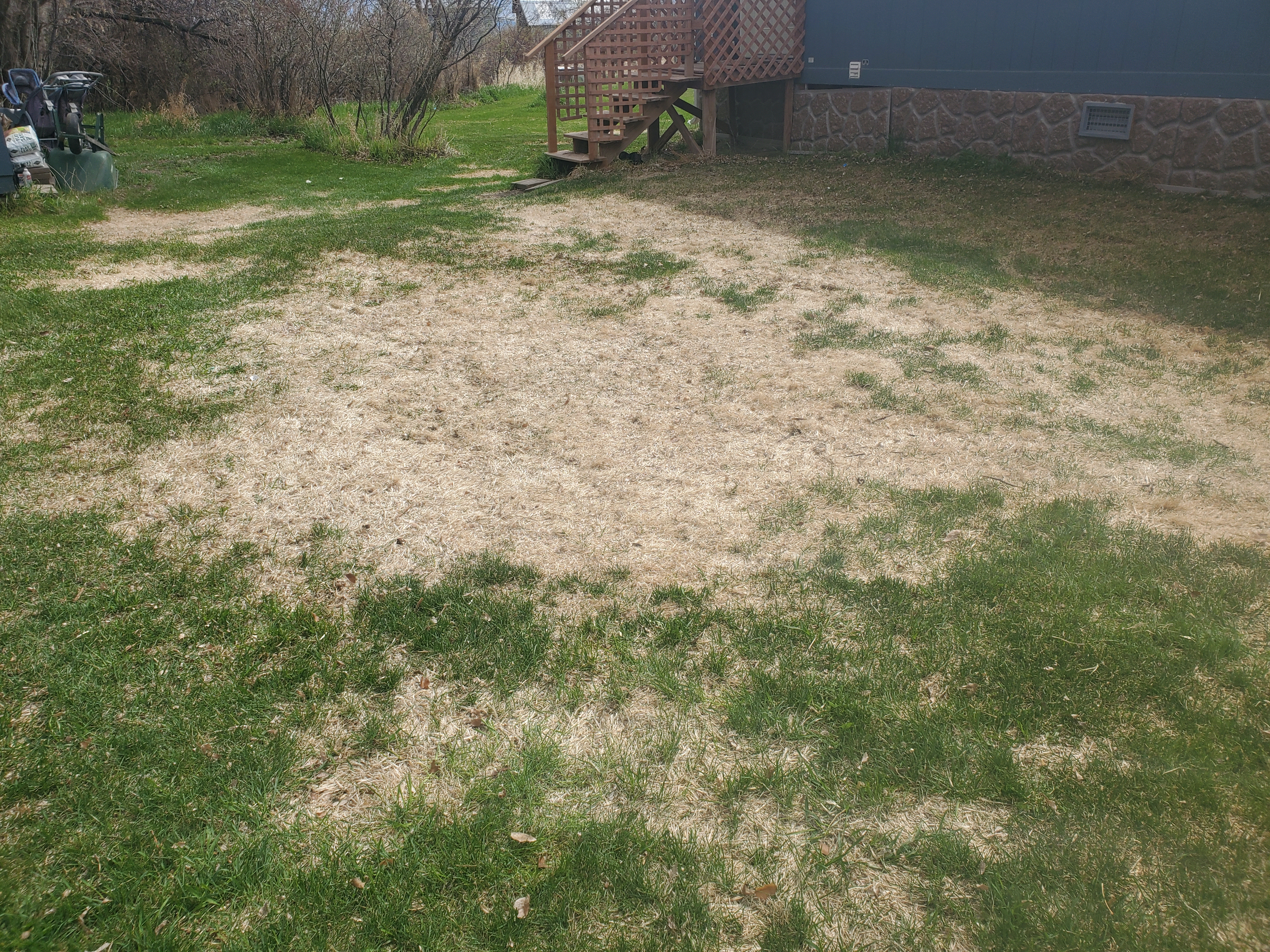Lawn Winter Kill
 | Author:
Allison Kosto, MSU Broadwater County Extension Agent
MSU Broadwater County Extension Agent |
Lawn Winter Kill Allison Kosto MSU Broadwater County Extension Agent Last week, we discussed winter damage in alfalfa fields. Unfortunately, that is not the only area that was hit hard by the long winter. I was a victim of winter damage to my lawn, and I know I am not alone. There was a significant amount of winter damage to lawns and turfgrass due to a number of causes.
One possible cause is snow mold. Snow mold is a fungal disease. You will often notice it in the early spring as the snow recedes and it shows up as gray matted areas in the grass where the snow laid for an extended period of time. If you look closely, you may also see gray or pink mold. Other conditions that contribute to snow mold are excess nitrogen fertilizer in the fall, excess thatch, shade, poor drainage and debris on the lawn such as leaves or straw. Snow mold weakens the plants, but typically does not kill them. These areas are often slow to green up but usually recover. Fungicide is not necessary.
Another issue that can cause damage is accumulated ice on the lawn. Even though plants are dormant during the winter, they still transpire and require oxygen. Plants covered by ice for 3 to 4 weeks will likely suffer injury or death. You may recall we had a brief warming spell in January. This caused snow to melt, but since the ground was frozen the water had nowhere to go. This type of damage is more often seen in low points in the yard and areas of poor drainage. If there was no proper drainage, the ice can continue to build up throughout the winter. Some of these areas will be slow to green up or may need to be replanted.
Voles can also cause damage to lawns. The first evidence of voles you see in the spring is a network of trails scattered along grassy areas where the snow was piled. Voles work hard during the winter to create a maze of runways underneath the snow and remove revegetation. Voles are also known for girdling trees and damaging roots. Because of their high production rate, control is difficult, and eradication is virtually impossible. Remove litter and ground cover to reduce food sources. Cut the lawn short prior to snowfall to reduce winter damage. Wrap the base of trees or shrubs with hardware cloth which can help prevent girdling during the winter.
You may also see salt damage next to hardscapes such as sidewalks, driveways and streets where salt was applied during the winter. Damage will be most intense next to the edge of the hardscape and lessen further away. Extensive salt damage can injure or kill plants. This can not only affect turfgrass but also trees and shrubs. Consider using a product that is less damaging to plants such as potassium chloride or calcium magnesium acetate. These products are often more expensive but less harmful to plants, pets and humans.
The good news is that in most cases, lawns will recover but they might look rough for a while. If you find that there are patches in the lawn that were killed, your options are to reseed or resod. Give it time though, they may just be slow to recover.
In the case of my lawn, in most areas, it was damaged by excess ice. There is also evidence of snow mold and voles. The iced areas are not showing much sign of life and time will tell if they recover. If you have any questions about lawn management, stop by your local MSU Extension Office at 416 Broadway or contact us at 406-266-9242 or allison.kosto@montana.edu
Article Images
Click on Image Thumbnail(s) to view fullsize image
PhotoCredit: Allison Kosto
Image 1 Caption: Winter Kill
